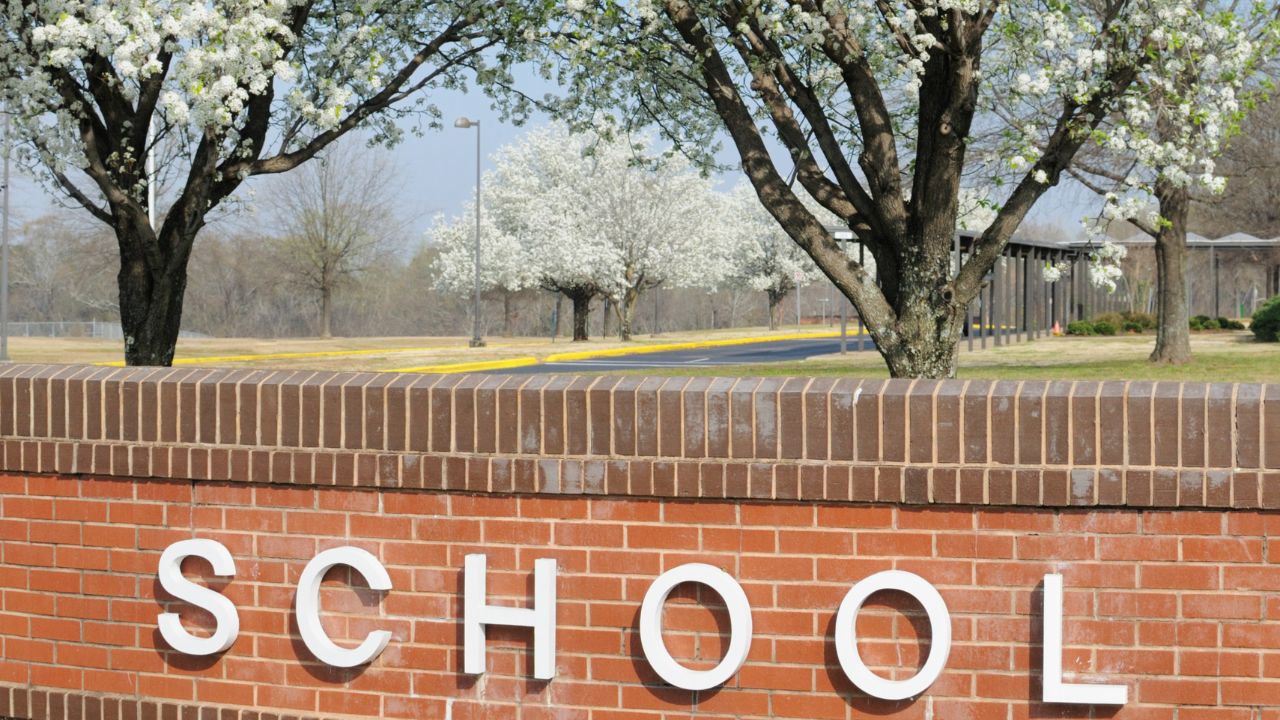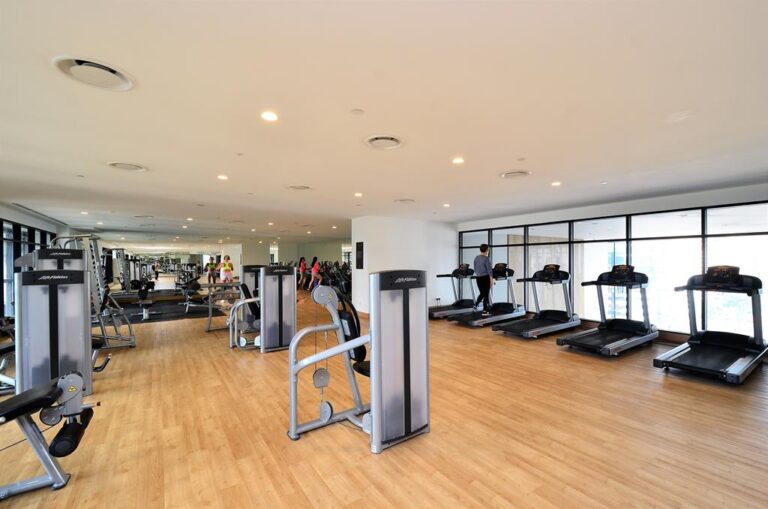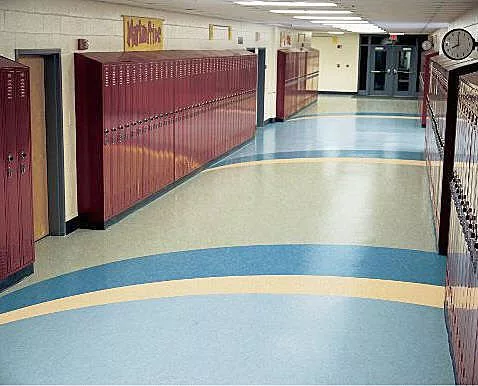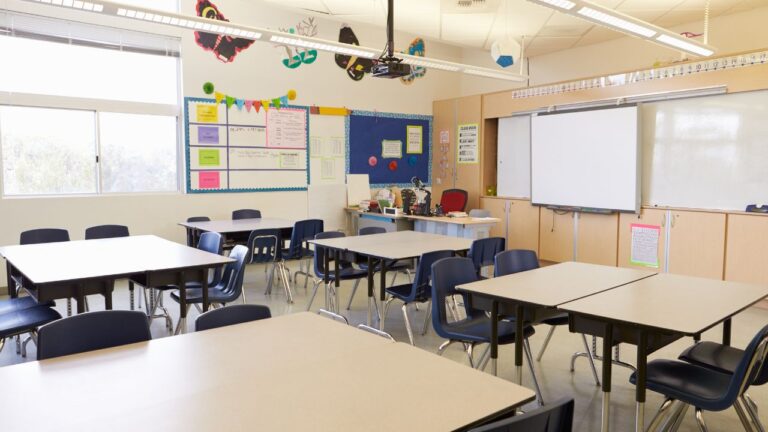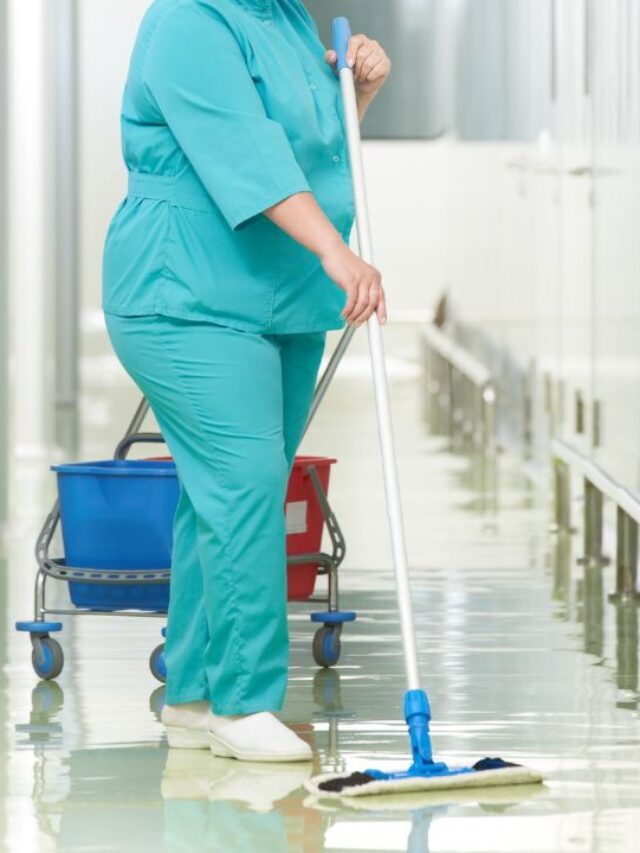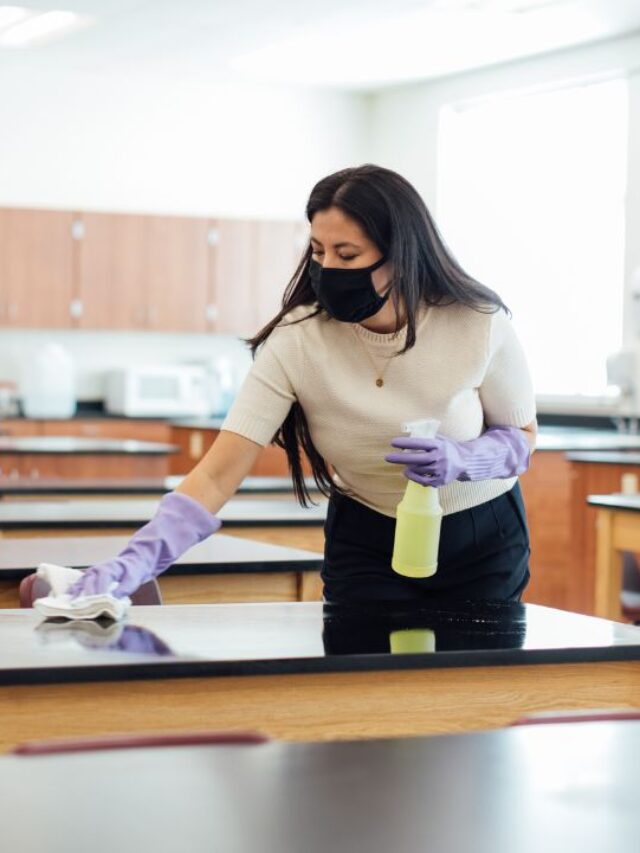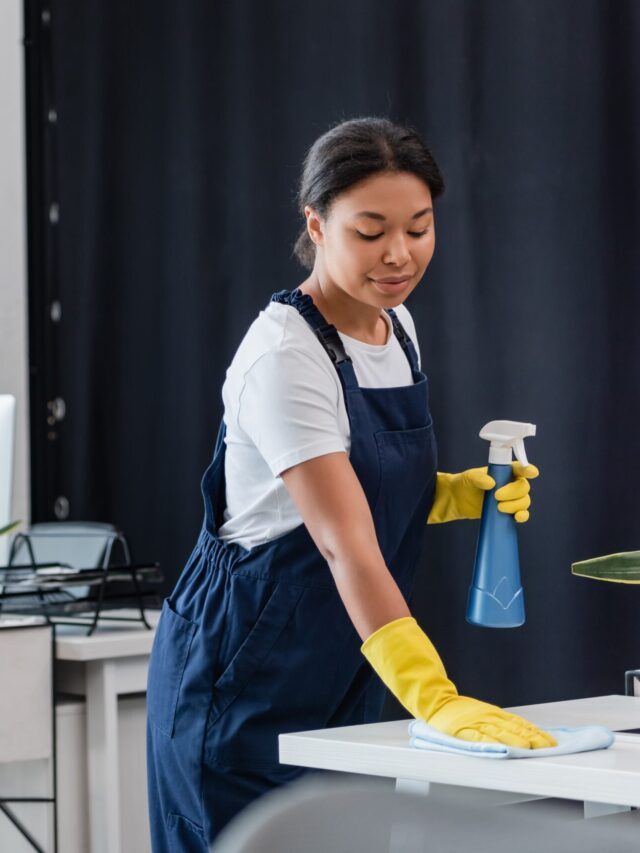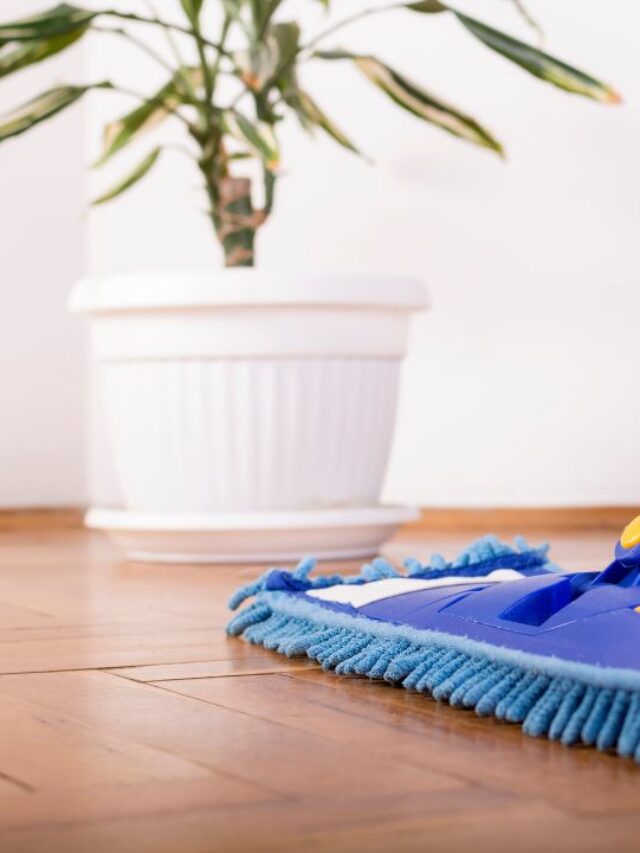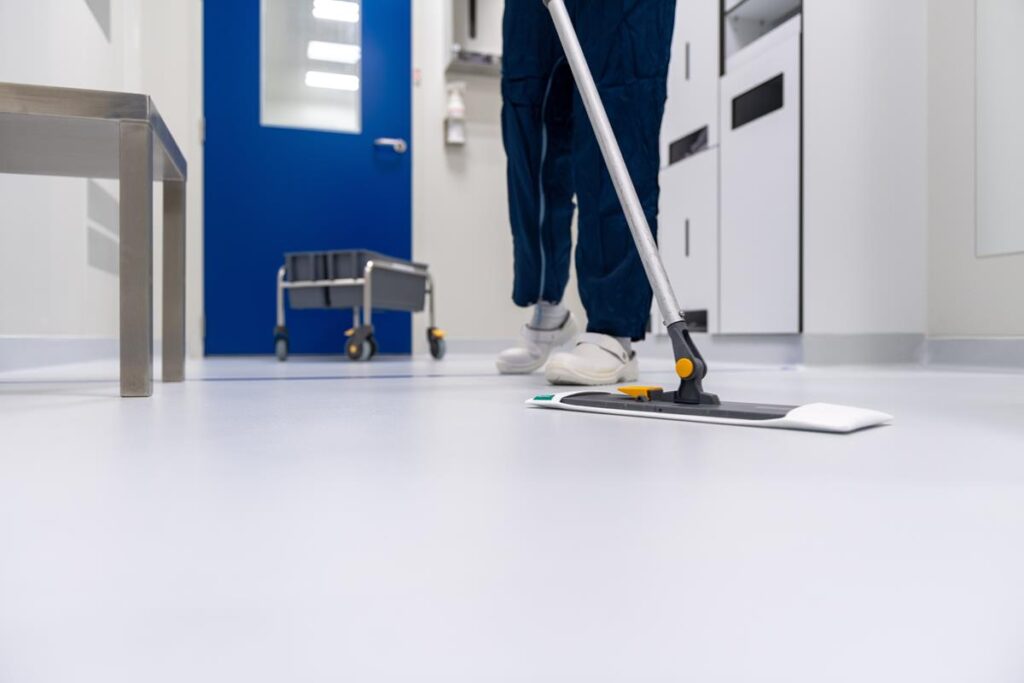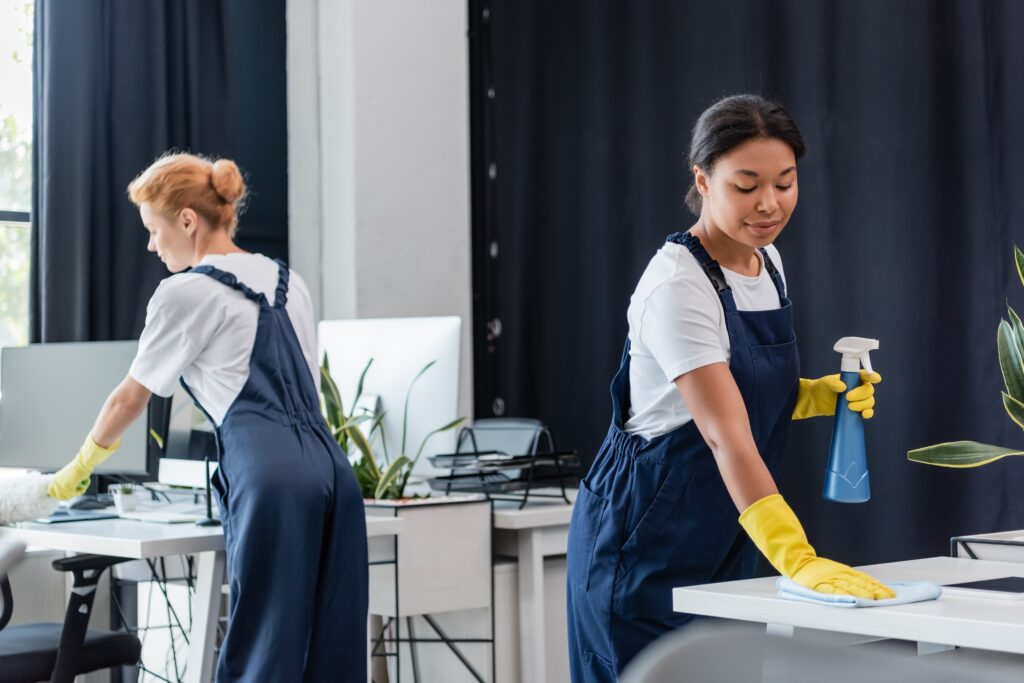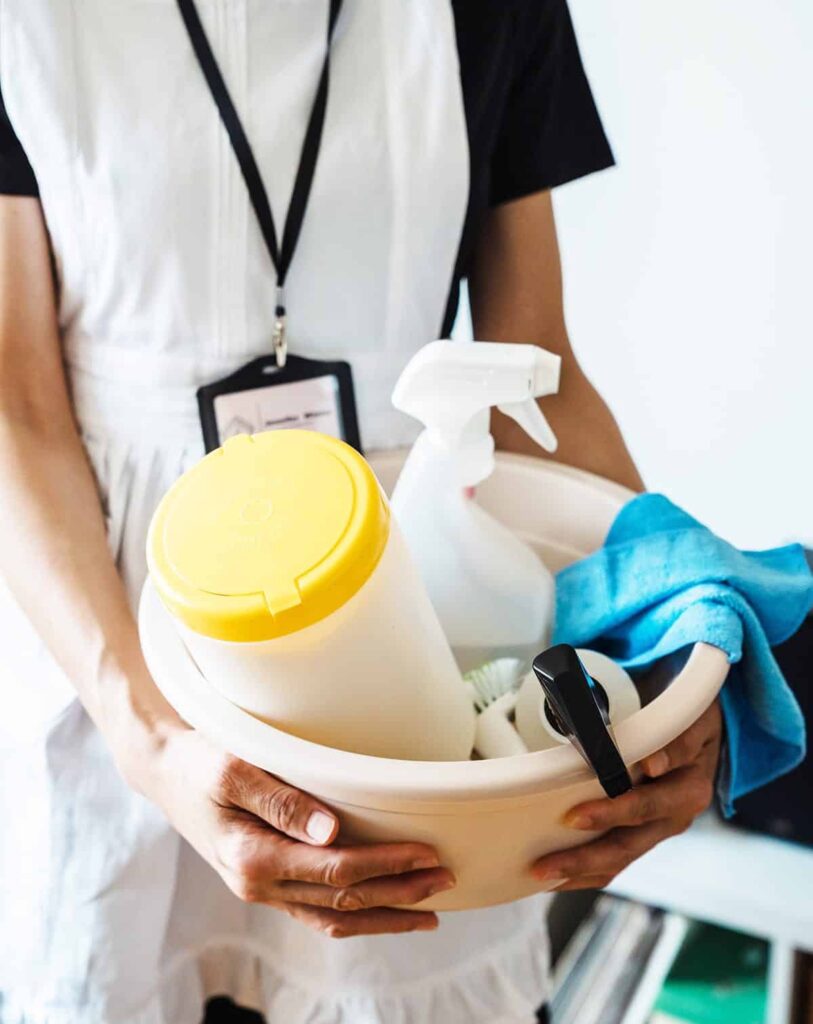How Schools Prepare for Spring Cleaning
As the seasons change and temperatures rise, schools in Manhattan and across the country embrace school spring cleaning to refresh their learning environments. Throughout the school year, classrooms, cafeterias, restrooms, and hallways endure constant use, accumulating dust, germs, and debris. Without regular deep cleaning, these spaces can become breeding grounds for bacteria, allergens, and viruses, impacting student health and academic performance. A dirty classroom not only affects hygiene but can also contribute to higher absenteeism rates due to illnesses spreading more easily in shared spaces.
Spring presents the perfect opportunity for schools to implement a comprehensive cleaning strategy that not only enhances cleanliness but also creates a healthier and more productive atmosphere for students and staff. From disinfecting high-touch surfaces to deep cleaning carpets and hard floors, maintaining school hygiene requires a collaborative effort between teachers, administrators, and professional cleaning services. By prioritizing school spring cleaning, schools can reduce absenteeism, improve air quality, and foster a safe, welcoming environment for students, teachers, and visitors alike.
Why Spring Cleaning in Schools is Essential
Spring cleaning in schools is about more than just making spaces look presentable—it’s about creating a healthier and safer environment for students and staff. Schools are high-traffic environments, with hundreds of students moving through classrooms, hallways, cafeterias, and restrooms each day. This level of activity means surfaces are constantly exposed to germs, bacteria, and allergens. If not properly maintained, these contaminants can lead to increased rates of colds, flu, and respiratory issues, directly impacting student learning and overall school performance.
Keep Your Office Spotless with Our Free Office Cleaning Checklist!
Want to make sure you’re covering all the essential cleaning tasks? Our comprehensive guide covers all essential cleaning tasks, from daily tidying to deep cleaning tips. Make sure no spot is missed and create a healthier, more organized workspace today!
Additionally, the change in seasons brings new challenges. Warmer weather introduces allergens like pollen, which can worsen symptoms for students with asthma or allergies. Regular deep cleaning can help mitigate these risks, ensuring that classrooms remain free of dust and irritants that can compromise indoor air quality. Moreover, a clean environment encourages better student focus and engagement, as cluttered or dirty spaces can be distracting and uncomfortable.
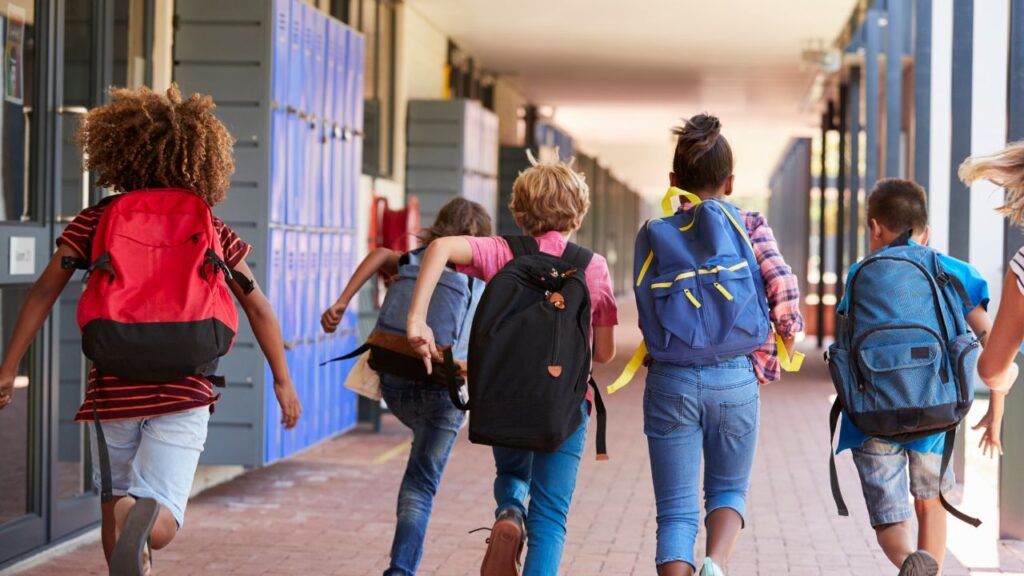
Key Areas to Focus on During School Cleaning
A successful school spring cleaning plan requires attention to all areas of a school, ensuring a safe and sanitary environment for students and staff. From classrooms to common areas, each space demands specialized cleaning techniques to remove germs, dust, and allergens. Focusing on key areas improves hygiene, air quality, and overall learning conditions.
1. Classrooms: Eliminating Germs and Dust
The classroom is where students spend the majority of their school day, making it one of the most important areas to maintain. A thorough school spring cleaning should focus on both sanitization and organization to create a space that promotes learning and well-being.
- Daily Disinfection of High-Touch Surfaces: Desks, chairs, whiteboards, doorknobs, and shared supplies should be wiped down with hospital-grade disinfectants to reduce the spread of germs.
- Regular Cleaning of Windows and Sills: Windows collect dust and dirt over time, reducing natural light in classrooms. Cleaning windows allows more sunlight to enter, creating a brighter and more inviting atmosphere.
- Thorough Dusting: Bookshelves, cabinets, toys, and learning materials should be dusted frequently to prevent allergens from accumulating.
- Floor Care: Carpets must be vacuumed daily and hard floors swept and mopped to remove dirt, debris, and food crumbs.
A well-maintained classroom not only keeps students healthier but also promotes a positive learning environment that enhances focus and engagement.
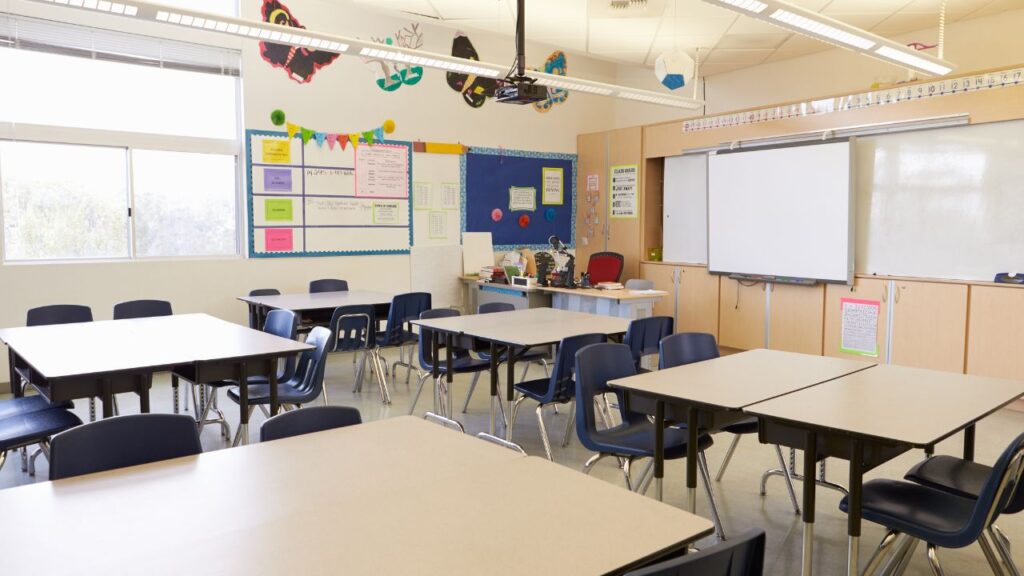
2. Restrooms: Preventing the Spread of Germs
School restrooms require consistent cleaning and sanitization due to their frequent use. A poorly maintained restroom can quickly become a breeding ground for bacteria, increasing the likelihood of infections and illnesses. Key cleaning measures include:
- Daily Disinfection of Toilets, Sinks, and Floors: Using EPA-approved disinfectants helps eliminate harmful bacteria and viruses.
- Stocking Essential Supplies: Ensuring that soap, paper towels, and hand sanitizers are always available promotes better hygiene habits among students.
- Deep Cleaning of Walls and Fixtures: Mold and mildew can develop in humid environments, so walls, doors, and sink fixtures should be wiped down regularly.
Ensuring restrooms are properly cleaned each day is crucial in preventing the spread of harmful bacteria and viruses, keeping students and staff safe.

3. Cafeterias: Maintaining a Safe Dining Space
Cafeterias are another high-traffic area where cleanliness is directly tied to student health. Foodborne illnesses can spread quickly if proper sanitation is not maintained. Essential cleaning tasks include:
- Daily Sanitation of Tables, Chairs, and Serving Areas: Preventing cross-contamination by cleaning and disinfecting surfaces where food is prepared and consumed.
- Deep Cleaning of Kitchen Equipment: Grease, spills, and food debris should be removed from ovens, stoves, and refrigerators to prevent pest infestations.
- Trash Management: Garbage bins should be emptied regularly to prevent odors and bacteria buildup.
With students eating multiple meals and snacks throughout the day, cafeterias must be cleaned consistently and thoroughly to maintain a safe and healthy environment.
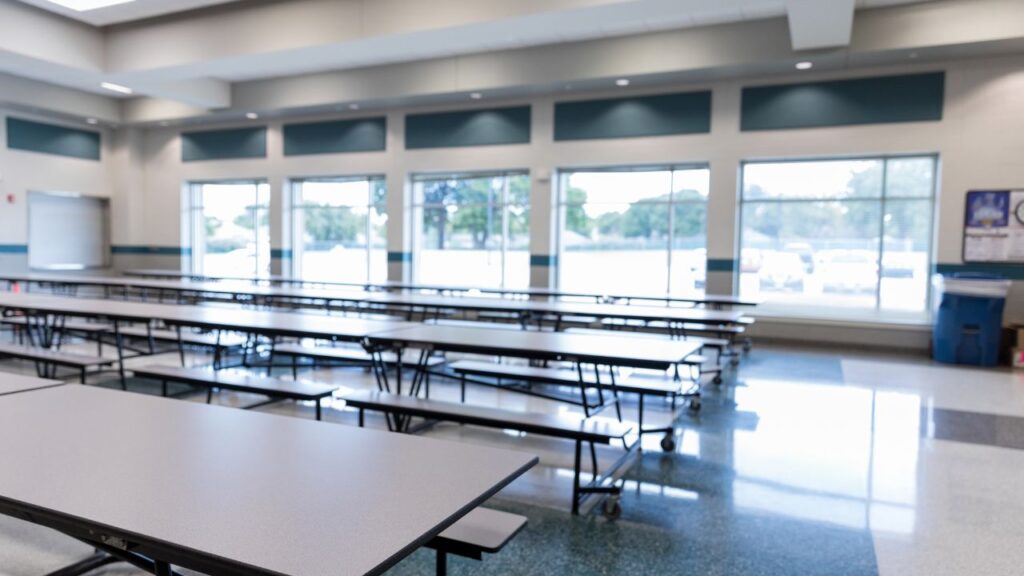
4. Hallways and Common Areas: Keeping the School Presentable
Hallways and shared spaces require frequent maintenance due to the heavy foot traffic they experience. A structured cleaning approach includes:
- Daily Sweeping and Mopping: Removing dirt and debris prevents slipping hazards.
- Locker Maintenance: Lockers should be wiped down regularly, with deep cleaning conducted during school breaks.
- Waxing and Buffing Floors: Polished floors enhance the school’s appearance and improve durability.
A clean and organized common area contributes to a welcoming and professional school atmosphere, making students and visitors feel more comfortable.
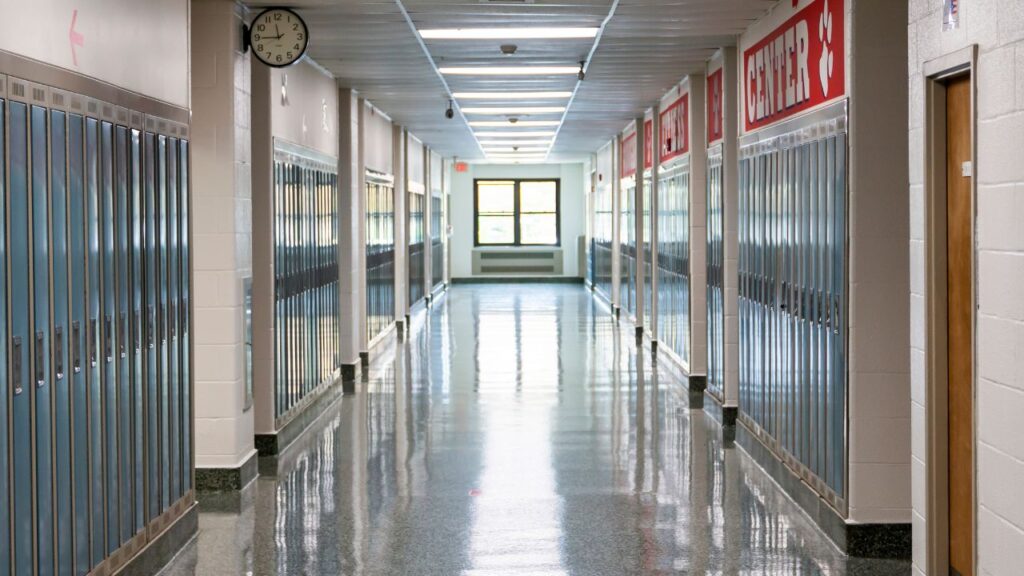
The Role of Technology in School Cleaning
At Busy Bee, we integrate software technology to enhance efficiency and quality in our cleaning services. Our digital tracking systems allow us to:
- Ensure Consistency: Cleaning teams follow customized checklists for each school’s needs.
- Monitor Quality Control: Real-time updates and digital reports help maintain high standards.
- Optimize Scheduling: Our technology-driven system ensures that cleaning services are delivered on time and without disruption.
By incorporating technology into our cleaning process, we provide more effective and transparent services that schools can rely on.
How Schools and Cleaning Services Can Work Together
Maintaining a clean school environment is a shared responsibility. Teachers and administrators can contribute by:
- Encouraging students to practice proper hygiene (e.g., regular hand washing).
- Reporting cleaning concerns promptly to ensure swift action.
- Keeping classrooms organized to facilitate easier cleaning.
By partnering with Busy Bee, schools benefit from expertise and advanced cleaning solutions tailored to their unique needs. Our dedicated team works diligently to uphold top-notch sanitation standards in every school we serve. We ensure a clean, safe, and healthy environment, allowing students and staff to focus on learning without concerns about hygiene.
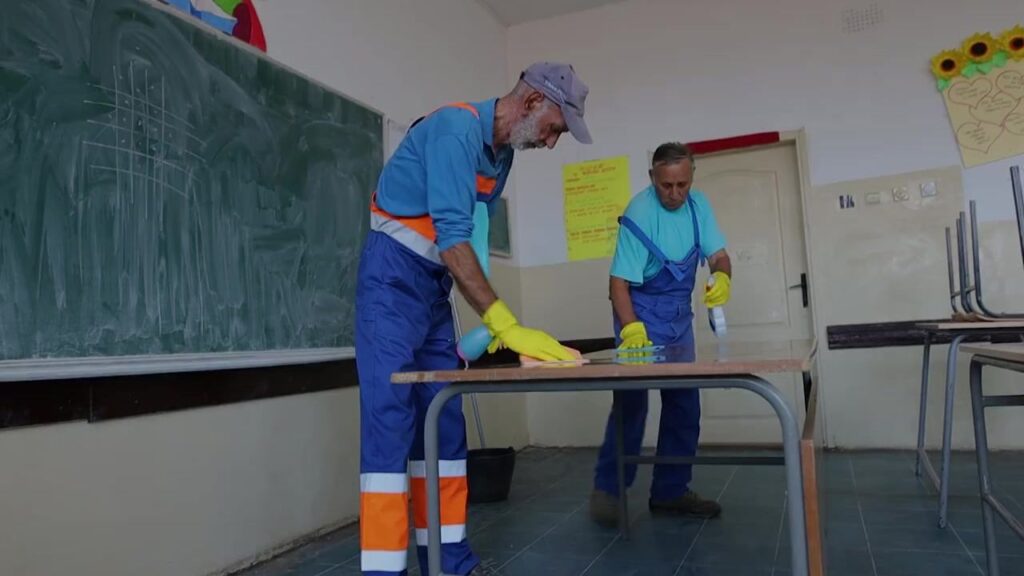
Conclusion
A clean school not only boosts productivity but also enhances learning. Therefore, prioritizing school spring cleaning helps create a healthier, safer, and more efficient environment for everyone. Moreover, a structured cleaning approach that targets high-touch areas, allergens, and deep sanitization significantly reduces illness risks. As a result, schools maintain a clean, welcoming atmosphere that directly supports academic success for students and staff.
At Busy Bee, we proudly lead the industry in commercial cleaning services by offering customized solutions backed by technology, reliability, and expertise. Additionally, our highly trained professionals are dedicated to delivering exceptional quality, ensuring schools in Manhattan receive top-tier cleaning services. Furthermore, we help educational facilities maintain the highest standards of cleanliness through expert techniques, attention to detail, and dependable service.
Busy Bee provides consistent, top-tier service, whether it’s routine maintenance or deep sanitization, ensuring schools remain safe and hygienic. We help educational facilities stay clean, organized, and ready for success with expert cleaning solutions tailored to their needs.
Contact Us
Get a quote
Your satisfaction is our priority, and we’re here to assist. Reach out to Busy Bee effortlessly by contacting us. Whether you have questions, need a custom quote, or want to discuss your cleaning requirements, our friendly team is ready to respond promptly. Connecting with us is the first step towards a cleaner and more comfortable environment for your home or business.
Call us for a quote today!
Contact Us
Get a quote
Your satisfaction is our priority, and we’re here to assist. Reach out to Busy Bee effortlessly by contacting us. Whether you have questions, need a custom quote, or want to discuss your cleaning requirements, our friendly team is ready to respond promptly. Connecting with us is the first step towards a cleaner and more comfortable environment for your home or business.

